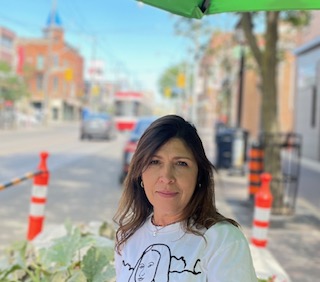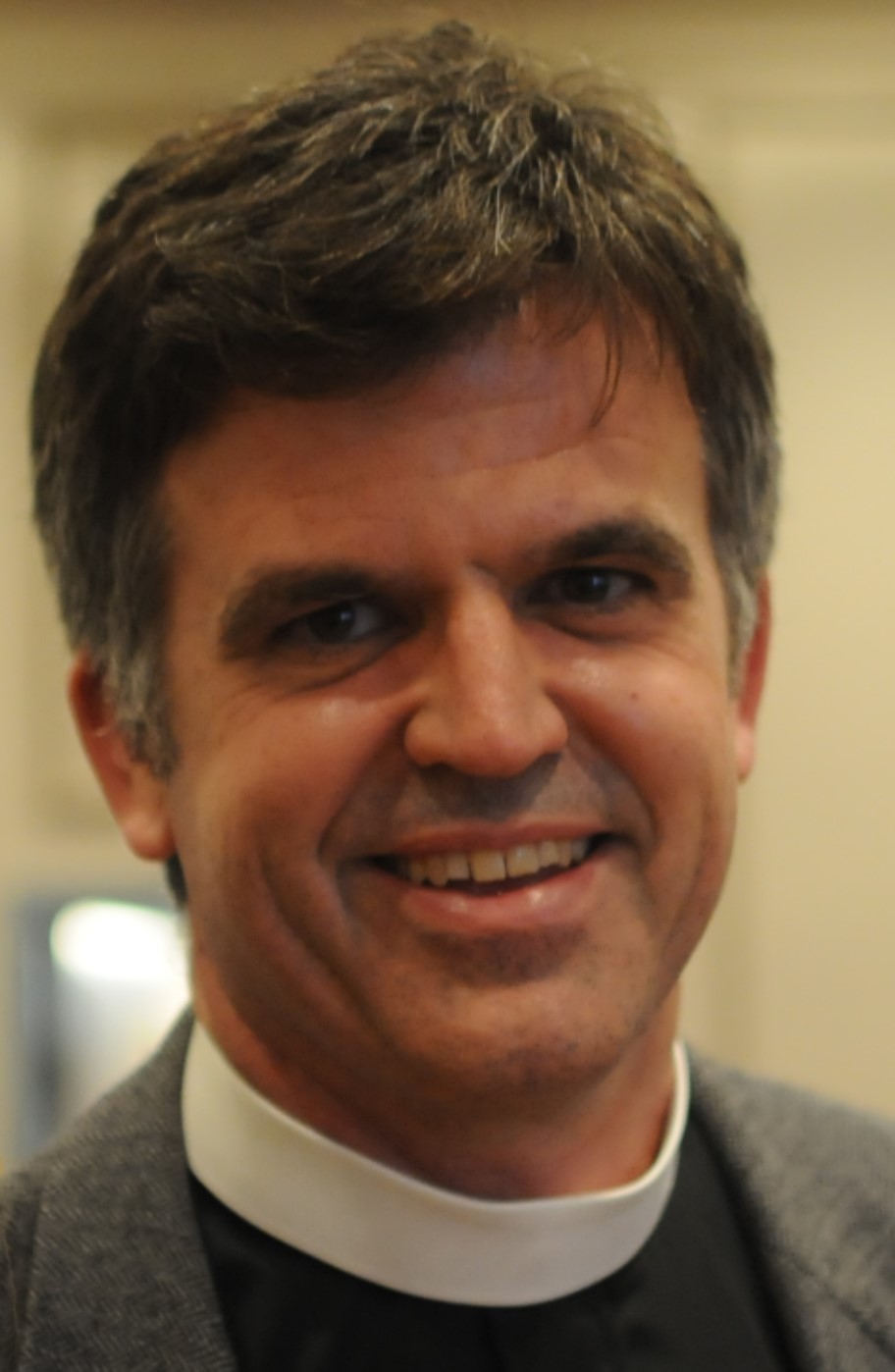Today is Pentecost Sunday. Pentecost falls fifty days after the celebration of Easter, and marks the day when the followers of Jesus had the shared experience of receiving the gift of the Holy Spirit. As we read in Acts 2, the followers of Jesus were in Jerusalem, unsure of what to do after his Ascension. Suddenly, and without warning, they began to have a strange spiritual experience – tongues of fire rested on them, and they were given the ability to speak in other languages, and to be understood by a wide variety of people who were in Jerusalem.
Or, that is how the Book of Acts describes it.
Our reading from the Gospel of John presents a slightly different account, and it is the words of John that I would invite us to focus our attention upon this morning. In John’s Gospel, the gift of the Spirit occurs on the day of the resurrection, when Jesus suddenly and mysteriously appears among his followers. Listen again to the words of the text.
After pronouncing a blessing of peace on them, “he showed them his hands and his side. Then the disciples rejoiced when they saw the Lord. Jesus said to them again, ‘Peace be with you.. As the Father has sent me, so I send you.’ When he had said this, he breathed on them and said to them, ‘Receive the Holy Spirit. If you forgive the sins of any, they are forgiven them; if you retain the sins of any, they are retained.’???
There is a lot to be pondered in this text, not least of which are a number of important movements in it. The movement from fear to a renewed faith; the movement from an awareness of suffering to the experience of joy; and the movement, in the power of the Spirit, out into the world with the proclamation of forgiveness.
So first, the presence of the risen Christ moves his followers from fear to a renewed faith. The passage begins with the observation that the disciples were living in fear – perhaps the religious and political authorities who had so mercilessly executed their friend were out to get them as well. It was a legitimate fear, but one that was keeping them huddled together.
Very few of us have lived with a real fear for our survival, because of our religious beliefs. But that does not mean that we are free of fear, of uncertainty, of insecurity, of dread. To the contrary, most of us know that there are times when we are a bit “held back??? out of a fear that someone discovering that we have faith will lead to ridicule, to misperceptions, to shame. We might boldly assert our faith when we are with others who share our faith, much like the disciples who were huddled together that day probably did not have too much difficulty admitting to each other that they had walked with Christ; but we, like them, are a little more reserved in more public settings. They were insecure, they were uncertain – and who among us live lives that have been entirely free of uncertainty, of anxiety and of insecurity?
But what is interesting is that Christ met those disciples exactly where they were – in the midst of their fear, their uncertainty, their anxiety, their insecurity. He did not judge them or condemn them, but instead spoke words of peace and assurance to them. “Peace be with you??? he said – and that proclamation of peace was exactly what they needed to hear in order to move them out of their fears towards a renewed faith.
And maybe, sometimes, that is a good reason to be together as Christ’s followers, even when we know that our minds are clouded with fear, with anxiety, with uncertainty. So that we can experience his presence among us, as those early disciples did, and be reminded that his promise of peace, and the renewing power of faith comes to us exactly where we are. It is in our brokenness, not in our strength, that Christ’s real power is revealed.
It was after those words of peaceful assurance that the second movement in the text is revealed. “After he said this, he showed them his hands and his side.??? With this simple act, he reminded them of the presence of suffering – that his hands had been nailed through; that the side of his body had been pierced by a sword, that his suffering had been real.
Very few of us need much evidence that suffering, in this world, is real. Such evidence, such reminders, are not simply the stuff of the evening news; rather, suffering is a part of our lives, and the lives of our loved ones. The suffering of the body, as we walk with loved ones who are going through difficult times, or when we, ourselves, experience decline in our physical well-being. The suffering of the mind, as we journey with those whose mental faculties and mental health are compromised and in decline. The suffering of the spirit, as hope and vision and confidence and joy and compassion seem like distant fantasies. The suffering of the emotions, when we go through times when our hearts our broken, our dreams evaporate, our future seems bleak and we are no longer confident that we have the strength to get through another day. Suffering comes to us in so many ways, but it is real and it is discouraging and it is painful.
Earlier this week, I conducted a funeral for a little 5 year old boy who was killed in a tragic bike accident along Lakeshore Boulevard. There is no rational, theologically comforting reason for such tragedy – but it reminds us that suffering is real.
And tragedy and suffering were no less real in the time of Jesus. Jesus showed his followers his hands and his side – and in that simple act, brought to the forefront of their minds the reality of what he had gone through – the betrayal, the abandonment, the failure of friends, the humiliation of his so-called trial, the torturous pain of the whips and the crown of thorns, the vulnerability and excruciating agony of the cross, the God-forsaken cry shortly before his death.
He had known suffering. And his followers were reminded that it was real.
But it had not triumphed. To the contrary, the very person who had endured that pain now stood before them, alive, and, as the text states, their reaction to the reminder of his suffering was that they were moved to joy – “then the disciples rejoiced when they saw the Lord.??? The suffering had not triumphed. Death had given way to resurrection. Which was the very reason why the disciples’ response was rejoicing – not at the reality of suffering, but because the presence of their friend revealed that suffering did not – and never would – have the final word.
This is a lesson that we are all called to learn, time and again, through the difficult crucible of human experience. Suffering, pain, illness, tragedy, estrangement, betrayal, humiliation – these terrible experiences are real, and there is no way to entirely escape them.
When we are in the midst of those situations, they can truly be overwhelming, and there are times when we must walk carefully and compassionately with those who are journeying through those difficult passages of life.
But the promise and the hope of the Gospel is that those difficult experiences will not exert a final claim upon us. The reality of suffering will give way to the presence and the promise of joy, to restored hope, to deepened faith, to eternal life.
The disciples had been moved from fear to a renewed faith; they had been moved from the reality of suffering to the promise of joy; now they were made ready for the last movement in this passage – a movement, a sending out into the world in the power of Christ’s spirit, to proclaim forgiveness.
Christ breathed the Spirit upon them – and gave them the mandate and commissioning to go out to love and serve the world, just as Christ himself had been sent into the world, in the power of the Holy Spirit, to love and serve and proclaim the forgiveness of sins.
And all for the sake of a world that – as John’s Gospel earlier reminds us – is loved by God. It was in love and for the sake of love that Christ had been given to the world, and it was in love and for the sake of love that Christ was now sending his followers out in his name. To serve those in need, to embrace the outcast, to engage with the excluded, to feed the hungry, to challenge injustices, to live with compassion, to love neighbour and enemy alike. To do the work of Christ to the very ends of the earth.
From fear to faith; from suffering to joy; and then, out into the world with love in their hearts, with the Spirit as their guide, with good news on their lips.
It is good for us to ponder these movements as we prepare to gather together at this Table. After all, we come to this Table carrying the burdens of our fears, our uncertainties, our insecurities, our doubts, our vulnerabilities, our shame, our brokenness; and our invited to renew our faith. At this Table, we are reminded of the reality of suffering – this is my body which is broken for you; this is my blood which is poured out for you – but also of the promise of joy – for this is the joyful feast of the people of God. And then we, like those early disciples, are sent out from this Table, in the power of Christ’s Spirit, to continue his work, to share his love, to undo the power and the burden of sin, to serve this world that is so beautiful, so broken, so beloved.
And all in the power of the Spirit that the living Christ breathes upon us.
And so, as we turn our attention from this text to this Table, hear again these words and receive them as Christ’s word to you, even now –
Peace be with you.
As the Father has sent me, so I send you.
Receive the holy spirit.
If you forgive the sins of any, they are forgiven them; if you retain the sins of any, they are retained.
Peace be with you.
Amen.






